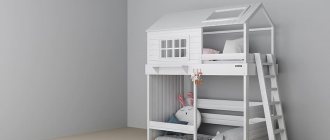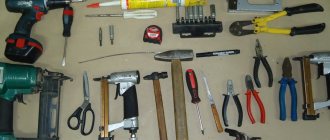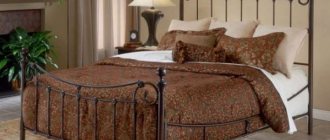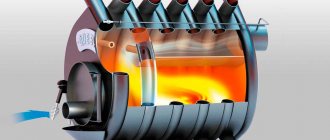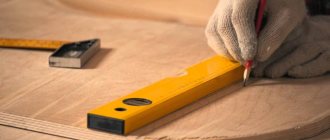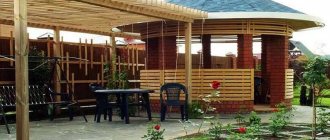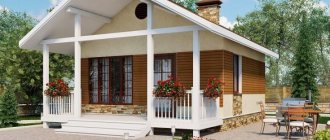A crib is the first piece of furniture that young parents acquire. As a rule, a sleeping place is purchased before the baby is born. But children grow quickly and after a few years the cozy crib needs to be replaced by a more spacious bed. High-quality furniture is not easy to find, and its prices are not affordable for every family budget. If you have certain skills, you can go the other way and make a bed with your own hands.
Crib diagram
Cot
Children's bed
Types of cribs for babies
Cribs, depending on their design, can be divided into several categories.
Classical
The most popular option is a simple rectangular model, mounted on legs or with wheels that ensure its mobility. It is intended, as a rule, for children from birth to three years. The bed can be equipped with drawers, removable side walls, and a lower bottom as the child grows older.
Transformer
Beds that can be adjusted depending on the situation will be a real solution in small apartments. When a child appears, in addition to the bed itself, he will need a changing table and a chest of drawers, where everything he needs is stored. In addition, it is convenient when it is possible to expand the structure as the baby grows. For example, a bed combined with a small changing chest can, after some time, be turned into a sleeping place for a teenage child. Round models with a diameter of 0.8 m are suitable for newborns. When the baby grows up, the transformer changes into an oval design. The absence of corners increases the safety of the piece of furniture for children.
Pendulum
Pendulum mechanisms installed in cribs help babies fall asleep faster. They can be longitudinal, transverse or universal. When choosing a model, you must carefully check the design for the absence of extraneous noise and jerking during operation. Pendulums must be equipped with clamps.
Cradle
If the financial capabilities of the family allow, cradles are installed for the newborn babies. Such designs are designed to provide maximum comfort to the newborn. Limited space creates conditions of complete security. A baby can sleep in a cradle until about six months of age, as it grows quite quickly. Cribs can be functional, equipped with various electronics and toys; simpler ones are intended only for motion sickness. Putting a baby to sleep in a bassinet is much easier than in a regular bed. In addition, many models have remote controls, making life easier for parents. An option for a cradle can be a cradle installed on a standard bed.
Manege
Beds with sidewalls made of mesh can be easily disassembled and transported if necessary. In such designs, which usually have bright colors, children not only sleep, but also play with pleasure.
Children's beds can be equipped with drawers, chests of drawers, and changing tables. To make it easier to move furniture around the apartment, rollers are installed, but you must not forget about the latches. Designs can have different shapes, be made in the form of a car, a house or a favorite cartoon character.
Preparation is the key to success
Corner bed arrangement diagram
The design of a retractable bed can be different. Let's look at an example of a corner location:
- Support wall frame.
- A frame podium that was mounted on vertical strong sides.
- Pull-out bed with mattress on rollers. There can also be several drawers for bed linen, books and the like.
- Several additional corner and side drawers.
- A ladder of one or two steps.
This is how the finished structure with a pull-out bed will look like.
Pull-out bed with mattress on casters
It is necessary to consider the size of the purchased mattress.
In fact, the space above and near the bed will be a kind of dead zone, since it needs to be pulled out unhindered at night. The height of the mattress and flooring will be 45 cm. This height is sufficient, since a standard apartment has a height of 2.30 m. A person of average height will feel completely comfortable. And on top you can easily place a computer table and an armchair.
DIY children's bed: basic design requirements
A self-made crib for children must meet the following requirements:
- this piece of furniture must be made exclusively from natural and environmentally friendly materials;
- the bed must have a reliable, durable and stable structure;
The bed must be made of high-quality, natural and reliable materials
- the product should not contain sharp corners or protrusions;
- the surface of all components of the structure must be smooth, without chips or roughness;
- it is necessary that the size of the bed corresponds to the height and physique of the child (with a margin of 25-30 cm in length);
- the structure must contain fencing elements and other devices that prevent the possibility of falling;
- a bed for a child should have high functionality, which is reflected in the presence of drawers, shelves and niches.
A do-it-yourself wooden children's bed has a number of advantages:
The size of the crib must match the height and build of the child
- you can be confident in the quality of the materials that are used for its manufacture, since many store-bought products lack information about design parameters;
- the bed design is created according to individual parameters, taking into account personal requirements and desires;
- during the manufacture of a product, it is possible to check the design for strength and stability;
- no large financial costs are required;
- Furniture made with your own hands gives incomparable pleasure and aesthetic pleasure.
First, buy a mattress that matches the child’s parameters; the exact size of the bed will depend on this
How to ensure safety for those who operate two-tier structures
The numerous advantages of compact structures do not exclude some of the disadvantages of such beds. The main factor that must be taken into account when installing furniture is the issue of safety . Cases of falls from the upper tiers or injuries when moving up the stairs are quite common. What is important to pay special attention to?
- Correctly calculate the size of the ladder, allowing you to move comfortably along it.
- Install railings around the perimeter of the bed (it is recommended to equip the stairs with them as well).
It is also better to equip the stairs with railings
- Provide anti-slip linings on handrails and steps.
- All components must be made in such a way that connecting parts or parts of the structure cannot cause damage to children and adults. High-quality grinding of materials, elimination of sharp areas and rounding of edges will significantly increase the safety of structures.
Classic bed on two floors
DIY bed: dimensions, designs and diagrams, sketches and drawings
Today, children's beds are presented in a wide variety of species. They differ in the type of construction, dimensions, number of components, the presence of additional furniture accessories and material of manufacture. However, not every model can be done at home.
The most popular models that you can make yourself are classic do-it-yourself wooden beds. The photos clearly show product options with and without sides, loft beds and bunk structures. On specialized websites on the Internet you can find a variety of do-it-yourself drawings of children's beds and the dimensions of each individual structural element.
The classic single children's bed is the easiest to make. It carries a minimal functional load, since it can only be equipped with a drawer for linen. The design consists of a frame, headboard, footboard, base, sides and legs, which is clearly shown in the drawings of a children's bed. The size of the frame, for the manufacture of which a wooden beam is used, depends on the dimensions of the sleeping place, which is determined by the parameters of the mattress.
The base can be solid (from a sheet of chipboard) or lattice in the form of lamellas with ventilation holes. The second option is more preferable. The footboard and headboard are usually made of solid wood, plywood or chipboard. Designs can have a variety of shapes.
Important! The height of the headboard should be greater than the size of the footboard.
To enclose the berth, front and rear sidewalls in the form of a solid or lattice wall are used. The legs of the bed are made independently or purchased in the store. In the first case, they can be separately attached or are a continuation of the integral main structure.
A loft bed is considered more functional. The sleeping area is located upstairs. Under it you can organize a full-fledged storage system by placing a chest of drawers, a cabinet or a rack. Creating such a design requires skills and abilities in furniture production. For two children, you can make a two-tier structure, the creation of which also requires a certain amount of experience from the master.
Installation of wall frame
The first step is to assemble a support structure made of timber, installed along the walls.
We measure and draw the markings of the bed-podium directly on the floor. We dismantle the baseboards, otherwise the support rails will not fall into place.
We install vertical posts made of timber along the perimeter of the flooring. The pitch of the racks depends on the load on the site. If there are two or three children in the house, who naturally cannot be driven off the podium, then we place supports at a maximum interval of 40 cm. A smaller load requires a wider step. The height of the racks should be lower than the height of the platform by the thickness of the timber.
We install a horizontal beam on top of the supports. We fasten both the posts and the cross beams to the wall with dowels and screws.
Do not try to place supports less frequently. Seasonal changes in humidity and temperature, constant dynamic load on the transverse beams will inevitably weaken the structure, and it will begin to creak. The stands give the podium the necessary rigidity.
Materials and tools
Master classes from experienced specialists contain useful tips on how to properly make a children's bed. Traditionally, the process begins with the selection of materials. Furniture must be safe and comfortable, so the most popular raw materials are:
- natural wood;
- metal;
- plastic;
- chipboard;
- MDF.
Models made from natural wood are environmentally friendly and safe. They do not have a specific odor or toxic elements in their composition. MDF boards are similar in performance to natural wood. Chipboard is somewhat worse, since it contains formaldehyde-based resins. When properly processed, the slabs are safe and cost less than other materials.
A wooden bed is the best choice, but this option will be quite expensive. Very beautiful colored models of different shapes and shades are assembled from plastic, but this material is toxic. It is difficult to choose high-quality synthetic raw materials.
In addition to materials, the master will need:
- special glue;
- self-tapping screws;
- drill;
- roulette;
- sandpaper;
- accessories;
- stain;
- brush.
Rocking chair made of maple with wicker back and seat.
A rather complicated chair to make. The author cut some parts on a CNC machine according to his own drawings, and some had to be finished by hand. The author used maple; it is a fairly hard tree, so to give the necessary shapes it was necessary to soak some parts in boiling water for a long time. The back and seat wrapping requires special work; how to do this, see the step-by-step photos and this video on YouTube
Cable reel rocking chair
If you have a cable reel that does not belong to anyone else, then you can make a rocking chair out of it. Below you can watch a detailed step-by-step master class on how to make such a rocking chair.
As you can see from the photo, the coil is disassembled, a groove for the boards is cut out in the circles, the rods are moved down, under the future seat, and everything is fastened together. It turns out not very difficult and quite a nice chair.
Requirements for homemade furniture
New furniture, especially a children's bed, should correspond to the age and height of the child. In addition, there are a number of requirements that must be observed when building a bed:
- Cribs should be comfortable for a child of any age.
- Reliability of fastenings.
- For bunk models and loft beds, there must be a durable ladder (and the best option is to make a ladder with handrails).
- All materials used in the work must be environmentally friendly and not emit harmful toxins during operation. Compositions for decorating surfaces must also be safe for humans.
- After assembly, there should be no sharp edges protruding above the surface of nails, screws, or jagged edges.
All work on the construction of a children's bed with your own hands should be carried out strictly according to a pre-prepared drawing.
Step-by-step instructions for making your own baby beds
We present the sequence of basic steps when making a children's bed with your own hands, regardless of the design of the children's bed.
The drawing is the first stage of creating a children's bed with your own hands. The main size is the height of the child. The child is growing up quickly. Add 10-15 centimeters to the taken measurement.
Below are examples of designs for children's beds. Choose your favorite model as a basis. As you gain experience, you will be able to design furniture yourself and create exclusive samples of products.
Preparing parts
- Apply the basic dimensions to the material. Use special markers that are sold in specialized stores;
- number the parts to make assembly easier;
- make a cut using an electric jigsaw or saw;
- mark the location for the holes in the corners of the connection. Drill them using a drill;
- polishing of all parts;
- cover the parts with varnish or interior paint. It is recommended to choose water-based products. The second layer of varnish or paint is applied after the first layer has completely dried.
Frame assembly:
- first of all, install the base of the structure, attach the lamellas to it;
- strength is ensured by suitable hardware: corners, screws;
- the backrests are attached to the finished structure;
- fix the rails for the boxes. Additional supports are installed under the berth in the center;
- The final stage is fastening the fittings.
DIY materials for a children's bed
Cribs for children are made of metal corners, polymer materials and wood. The most popular is the last option. Here are some reasons for the tree's popularity:
- safe for the human body;
- the product has a noble appearance;
- wooden beds are always in trend;
- fits into any interior;
- simple processing process, simple tools;
- the product does not require special care.
What you will need to create the design:
- edged boards - from coniferous trees;
- wooden blocks with a cross section of 50*50 or 50*100 mm;
- slats of different sizes depending on the design;
- plywood with a layer thickness of about 5 millimeters.
Important! Regardless of the model, choose durable wood. This will ensure safety, quality, and extension of the service life of the furniture.
After you have chosen a model and decided on the material for its manufacture, you need to clearly understand what requirements a self-made crib must meet:
- convenience – the child’s rest should be complete. The baby’s behavior and emotions depend on the quality of night’s sleep;
- safety – not only when the child is sleeping. Children often play games on the bed, such as jumping;
- During the manufacturing process, remove all sharp corners from structural parts. You can wrap them in soft fabrics, rope, foam rubber. It will be like a decorative element;
- Do not use materials impregnated with harmful substances. They can cause allergies and harm the child’s health;
- think over a bed model that will serve your child for more than one year. Consider the fact that children grow quickly, their height and weight change;
- structural strength - reliable fastenings; ill-conceived drawings can lead to an accident. This is especially true for models with two floors;
- minor injuries - splinters, abrasions. Be careful when sanding the product. Use high-quality materials and tools for this;
- models in the form of houses should be designed so as to prevent stagnation of air inside the structure. Beds are primarily intended for sleeping. Quality rest is possible with sufficient air exchange.
Tools
To make a full-fledged children's bed with your own hands, you do not need to buy expensive machines. Here is the basic set of tools for sawing and assembling the structure:
- devices for measuring and marking;
- electric saw;
- clamp for fixing parts;
- screwdriver or electric drill;
- hand-held electric sander or sandpaper;
- wood glue.
Children's bed with drawers
A comfortable bed model for a child who controls his actions during sleep and will not fall out of bed. If desired, the bed can be additionally equipped with removable sides. There are spacious drawers under the bed. The side openings are made for doors or curtains made of thick fabrics. You can leave them open, use them for large boxes with toys, or as a middle part, add drawers. Ask your child’s opinion and fulfill his wish.
Assembly sequence:
Canopy bed
The baby will undoubtedly like the bed. You can attach various fabrics to the structure, or hang garlands with toys. The model can easily be converted into a bed in the form of a house or tent. Below is a design drawing made in inches. The dimensions can be changed to fit the mattress you already have. To convert inches to centimeters, use the factor 2.54. The height of the canopy also depends on your preferences.
Cutting parts
Bed house
This type of bed will allow you to transition painlessly from a crib for the little ones and successfully use the furniture all the way to school. On the right is a photograph with a set of fixtures and tools that will be required during the manufacturing process of the structure. Sequencing:
- determine the dimensions of the mattress and the height of the wall to the ceiling;
- prepare bars for the frame - upper and lower crossbars;
- make holes in them for fasteners - screws;
- fix the corner brackets and brackets;
- attach the crossbar parts. Connection angles must be 90°;
- to give strength to the structure, use high-quality glue to connect the bars;
- Sand the finished product and coat it with varnish intended for interior use. The safest paints and varnishes are water-based.
Additional items
The standard model is supplemented with various elements for beauty, space saving, and increased functionality. The boxes are designed at the drawing stage, but they can also be replaced with baskets made of lightweight, safe material. In this case, the height of the furniture should be sufficient for their location under the base.
The sides of the crib are made from safe cotton material. They are made in the form of cartoon characters, animals or simple geometric shapes. Restraints for older children can be made of wood or transparent thick plexiglass - they will prevent the baby from falling while sleeping. It is advisable to think through monolithic elements at the drawing stage.
Children's beds are often created with canopies. They give comfort, tenderness, airiness. The element is secured to the bed using racks or hung from the ceiling. Choose calm, soft shades, translucent fabrics that are pleasant to the touch. For independent sewing you will need: the material itself, scissors, a marking pencil, threads, needles, pins and a pattern. If desired, the canopy is decorated with ruffles, pompoms, and lace.
It is better to attach a children's canopy for little ones to a wide ring and hang it from the ceiling.
A bed for a child should be strong, safe, and reliable. You can independently build a model of any complexity. The algorithm boils down to drawing a drawing, preparing materials, procuring parts, processing and assembly. It all depends on the financial capabilities and skills of the master. Even a basic model must meet safety requirements.
Boxes
Side
Canopy
Pros and cons of making children's furniture yourself
The younger the child, the more time he spends in bed. When buying a ready-made crib, you cannot say with complete confidence that it is completely safe for your baby. So what are the advantages of a homemade crib? Let's compare both options:
Crib from the store
Positive points:
- There is no need to waste time on a finished bed.
Negative sides:
- there is no confidence in the quality of the material;
- reliability is in question;
- the quality of the coating leaves much to be desired;
- poor quality of bed manufacturing occurs;
- you always have to pay extra.
DIY children's bed
Pros:
- independent choice of material quality;
- the design is reliable;
- every detail is carefully processed;
- paint coatings are selected correctly, in compliance with sanitary requirements;
- minimal, justified costs for materials;
- pleasure from the process;
- acquisition of new skills.
Minuses:
- time-consuming.
Bed design options: choose the right one
There are a large number of modifications of sleeping places, but we will focus on the most popular:
- with and without sides;
- loft bed;
- transformer.
Below we will look at the process of making a regular baby crib with legs with a headboard and footboard with our own hands. The option is without tricks, does not involve particularly complex work and will not take much time.
Also, having understood the principle of operation, you can, by analogy, make a crib for a newborn, baby or child over 3 years old.
Roll-out from laminated chipboard
To make such a model you will need the following materials:
- laminated chipboard sheet (19 mm) - for the main parts;
- furniture board (22 mm) - for the bottom;
- accessories, fasteners.
The assembly diagram includes the following steps:
- the sheet is cut into separate parts according to the drawing;
- assemble the structure using corners and fasteners;
- The lower tier is equipped with wheels so that the sleeping place can move freely.
A roll-out bed is an ideal option for a small apartment.
Making a bed with your own hands
Having firmly decided to build a structure yourself, you should understand all the nuances associated with its creation. Initially, a drawing is developed that displays all the component elements. Then they acquire the materials necessary for the work, prepare the tools, and if any of them are missing, they buy them in addition.
Based on the diagram, raw materials are divided into component parts. They are cut out, combined into a single structure, treated with special compounds, painted, varnished, and decorated. For clarity, we will consider in detail the main stages that the process of making a classic crib includes.
Drawings and diagram
The creation of any object is impossible without a drawing. In a graphic image made to a certain scale, the dimensions of the nodes are indicated. To compile it, you will need minimal drawing skills; you can also use special programs. When developing a project, you should consider:
- Dimensions of the room where the product will be installed. The spacious room can accommodate a larger bed.
- The dimensions of standard products for children under three years of age are 120x60 cm. If you plan to use the design in the future, preference should be given to larger models 150x60 cm, 180x70 cm.
- At the bottom of the crib you can equip cabinets in which children's things will be stored.
- For preschoolers, it is worth providing removable sides that will protect them from rolling and falling.
- Design and decoration are chosen depending on the preferences of the parents.
Required tools and materials
To make and assemble the bed you will need the following materials:
- board;
- MDF sheet;
- varnishes and paints;
- screws, fasteners, rubber heels for legs.
Tools:
- wood saw, jigsaw;
- hammer, screwdriver, screwdriver;
- drill, drill bit;
- measuring instruments, a simple pencil.
Main parts and their preparation
A standard bed consists of 4 legs, 2 backs, sides, removable sides, frame, slats, mattress. The last element from the list is purchased ready-made, the rest are made by hand. The process looks like this:
- In accordance with the drawing, markings of all components are applied to the tree. This can be done using a tape measure and a simple pencil.
- The elements are cut using a jigsaw or saw.
- The components are sanded with sandpaper.
- Depending on the length of the sidewalls, metal corners are cut out with a grinder and used to install the mattress. Holes are drilled in them for self-tapping screws to secure them to the wood.
- All components are painted and varnished.
Main assembly steps
Work on assembling the bed is carried out in the following sequence:
- The backrests located at the head and foot are assembled. They are connected to the legs.
- Prepare the base for the mattress. To do this, metal corners are attached to the wooden sides using self-tapping screws. The lamellas are fixed to them from above, perpendicular to the side walls.
- The backs and base for the mattress are connected using furniture fittings; for reliability it is better to use corners.
- A mattress is installed on the frame.
- Removable protective sides are added to the sides, secured to special metal or wooden fittings.
- If necessary, the finished product is decorated.
Homemade bed-car
Few boys will refuse a car bed. And you don’t have to go to the store to please your child. Using plywood or MDF sheets, water-based paints and varnish, an ordinary sleeping place turns into a dream come true: a do-it-yourself children's bed in the shape of a Batmobile (or any other car) can be realized in a week of leisurely work in the evenings.
First, find an image of the car that suits you, find a program with the ability to visualize pictures. Having transferred the image, it can be divided into squares with a side of 100 mm - so that later it is easier to convert it to real scale. It’s most convenient if the entire part fits into a sheet of plywood or MDF you bought, it’s even better if you can make two side panels from one sheet... In general, select the dimensions, change the shape. Once you are satisfied with the result, you can transfer the design to the sheet.
It all starts with drawing the sheet into squares with a side of 100 mm.
Referring to the existing sheet, transfer all the lines from the paper to the plywood. At first the lines are thin, after you have more or less drawn everything, you can outline the resulting contours with a thick line - it will be easier to cut out. Although the details are needed in duplicate, there is no point in drawing the second one: having cut out the first one, we will outline it and get the second one.
This project also has overhead parts - we draw them separately. When everything is ready, take a jigsaw and cut along the contours.
Decor ideas
To make a children's bed from wood with your own hands, you need to be guided by the accompanying drawings and dimensions. Since the size of the mattress is fundamental, you need to independently calculate the dimensions of the parts.
Based on Harry Potter
Making such a bed is not much more difficult than a regular one, but the joy of a child who dreams of touching the magical world of Harry Potter will be endless.
The main decorative elements are:
- number 5979 (the numbers can be easily cut out of wood, painted silver and glued to the footboard, or use metal badges for this purpose, which are sold in a hardware store to indicate apartment numbers);
- an inscription symbolizing the Hogwarts school of wizards (the easiest way to do it yourself is by printing it on a color printer, gluing it onto a piece of veneer cut to size and covering it with several layers of varnish).
The space under the bed can be left empty, but it is much more effective to fill it with drawers. An excellent option would be to equip an extra bed there, which will come in handy if one of the young wizard’s friends comes to visit.
The original dimensions of the bed and color combination are shown in the figure.
With canopy
This bed will be more to the taste of girls. According to the design concept, the canopy is made in the form of side curtains, and the top of the bed remains open, but if desired, you can improve the design (for example, tighten the top part with fabric).
Since curtains need to be washed regularly, the fastening should allow them to be removed and hung back without difficulty.
If for some reason the presence of a canopy is undesirable, the same bed can be made without it. To do this, it is enough to shorten the slats on which it rests, so that the legs end flush with the sides.
Cozy house
A real lifesaver for parents whose children have trouble falling asleep. The design of this bed creates a calm and at the same time fairy-tale atmosphere, and high sides in the form of walls and a roof help the child feel protected.
The effect of the night sky can be created on a tree in several ways:
- paint with acrylic paints, which have a beautiful glossy texture, are durable, and do not have a strong odor;
- purchase wallpaper or self-adhesive film with a similar design;
- cover the board with a fabric of the appropriate color (in this case you will have to regularly vacuum the inside of the bed).
Instead of drawers under the bed, you can equip a pull-out sleeping area for guests.
Two-tier with ladder-chest of drawers
If there are two children in a family, and the area of the apartment does not allow for a separate bed for each, you should pay attention to this option. True, unlike simple designs, creating a bunk bed will require more time, skill and effort.
Under-bed drawers and a chest of drawers will optimize space and provide additional storage space. If desired, the steps can be made ordinary.
When working on such a bed, you need to take care of the safety of the child who will sleep on the lower tier. All fastenings of the “top floor” must be reinforced with metal corners.
Possible mistakes
Anyone who has not previously encountered furniture making may make a number of mistakes. Here are the most common ones:
- Using fresh wood. Since over time the material will dry out, become denser and, accordingly, decrease in size, the structure will simply fall apart. For a bed, you should only purchase boards that have been left in a dry, ventilated area for two or three years or have been machine dried.
- Neglecting to polish parts. All parts of children's furniture must be properly processed to avoid injury. Since a child can stick his hand even into narrow cracks or crawl completely under the bed, even those that are inside the structure should be sanded.
- Connecting parts using screws. This assembly option is good anywhere, but not in children's furniture. Under the influence of constant loads, the thread will destroy the structure of the wood fibers, and over time the structure will become loose. To assemble the parts, you should use special tenon joints, which are shown in the figure below, and be sure to glue them with wood glue. To strengthen areas that are subject to the greatest loads, metal ties are used.
Floor finishing
Carpet finishing
The completed frame should be beautifully finished. To do this, the entire surface must be treated with a wood primer, for example, drying oil. The surface must be dry. Then paint the surface in two layers.
If you don’t like painted surfaces, you can lay carpet on the floor of the podium. To do this, distribute the carpet evenly over the surface of the podium. Press it along its entire length with a heavy object. Then make markings that will exactly follow the outline of the entire structure. In places where the bed platform has rounded areas, work extremely carefully and carefully. Use a sharp knife to cut carpet. Each edge can be further processed, for example, with a braided cord or something else. When you have completely adjusted the carpet to size, it should be laid with glue so that it does not move.
This is how a pull-out bed is made. In literally four square meters you can organize a workplace on the podium and a pull-out bed under it. As you can see, making a pull-out bed is not that difficult. It just takes a little patience and effort.
Photo of a children's bed with your own hands
Sources
- https://mebel-expert.info/detskaya-krovat-iz-dereva-svoimi-rukami/
- https://remoo.ru/mebel/detskaya-krovat-svoimi-rukami
- https://mebel-sovet.ru/krovati/dlya-rebenka/975-detskaya-svoimi-rukami
- https://svoimirykami.guru/detskaya-krovat-svoimi-rukami/
- https://remoskop.ru/detskaya-krovat-svoimi-rukami.html
- https://dom-i-remont.info/posts/mebel/detskaya-krovat-svoimi-rukami-chertezhi-vidyi-i-materialyi/
- https://remont-spalni.ru/detskaya-spalnya/kak-sdelat-detskuyu-krovat-svoimi-rukami.html
- https://roomester.ru/interer/detskaya/detskaya-krovatka-svoimi-rukami.html
- https://kak-sdelano.ru/detskaya-komnata/detskaya-krovat-svoimi-rukami-foto-idei-i-chertezhi
- https://kakpostroit.su/detskaya-krovat-iz-dereva-svoimi-rukami/
- https://novamett.ru/krovat/dlya-novorozhdennogo
